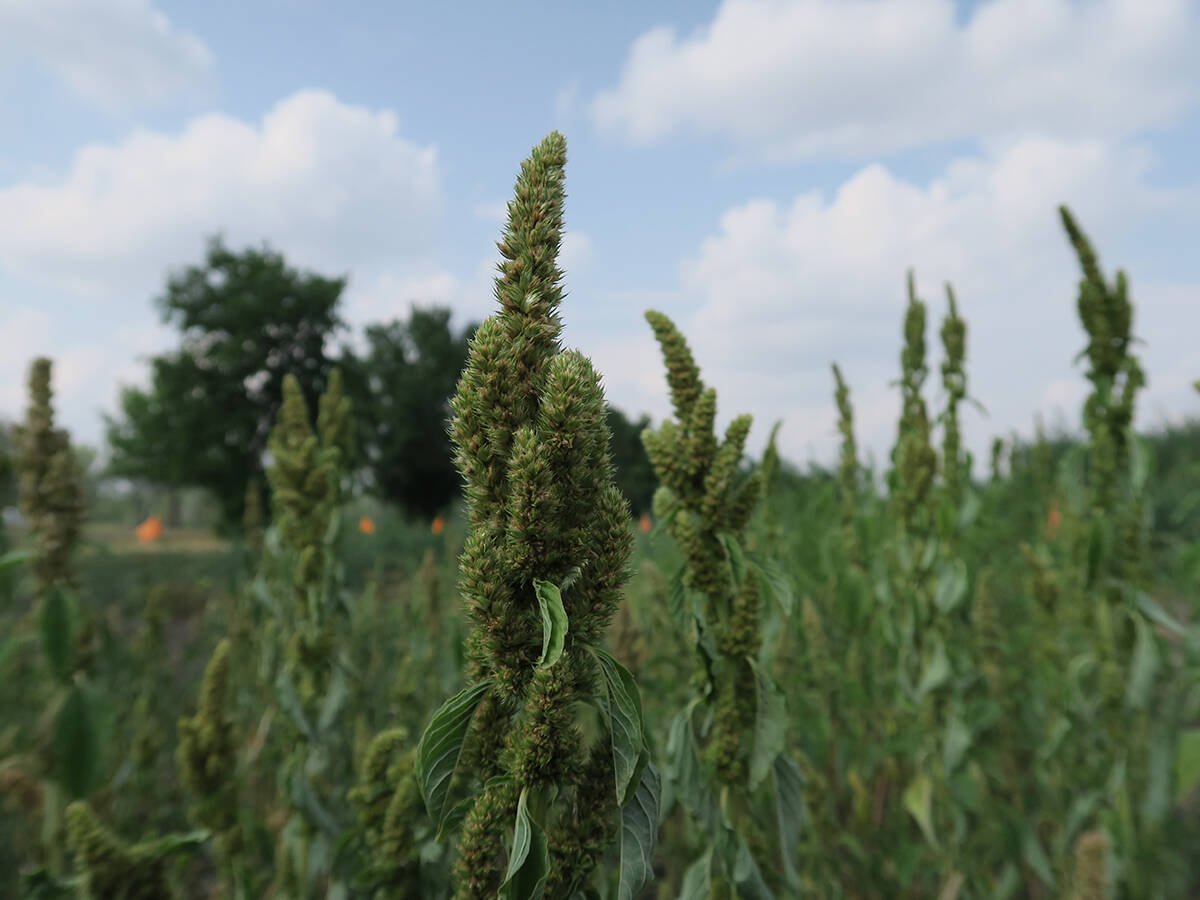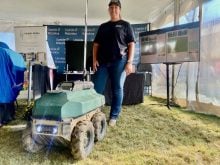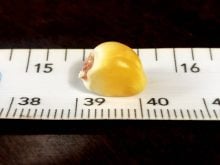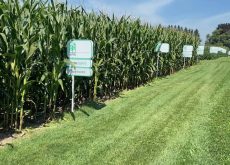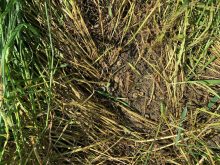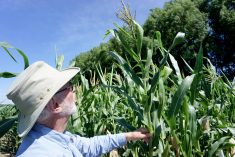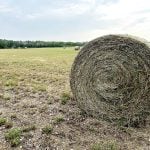The newly introduced Convintro herbicide could be another option for control of herbicide-resistant weeds.
Convintro has a narrow range of efficacy targeting the pigweed family of plants.
WHY IT MATTERS: Glyphosate-resistant varieties of waterhemp and Palmer amaranth – both in the pigweed family – have been significant yield robbers for several years in the U.S., and more recently in Canadian row crop-growing regions.
Canadian corn producers should have the first opportunity to share in that excitement with the planned commercialization of the Group 27/Group 12 formulation later this year.
Read Also
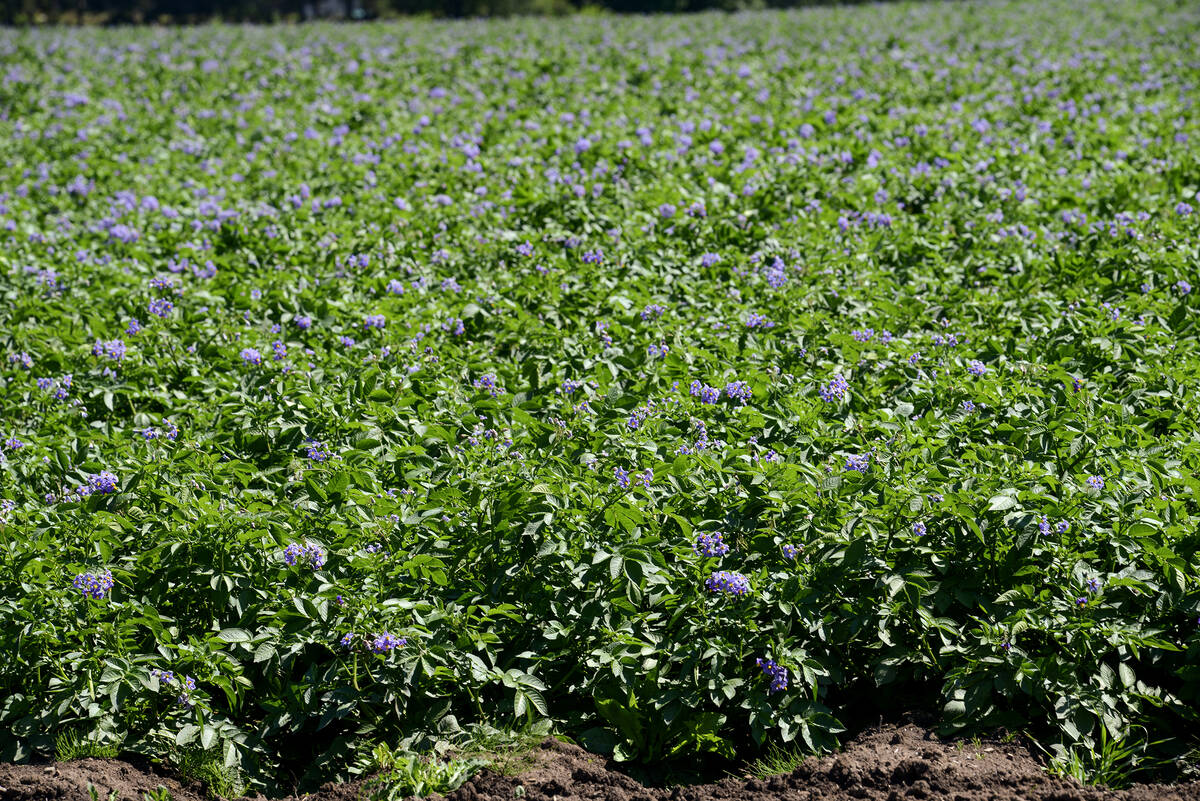
Ontario potato yields down slightly, but quality is high
Ontario’s potato harvest is on the home stretch despite drought and hot summer temperatures stretching into October.
Attendees at Bayer’s It’s Grow Time plot research tour on July 9 near Tavistock heard advance details about the product and its Group 12 active ingredient diflufenican.
“I’ve been trying to spread the word as much as I can about resistant waterhemp and Palmer amaranth,” said Adam Pfeffer from the cab of his combine as he harvested wheat near St. Thomas several days after the It’s Grow Time event.
Canadian approval before the U.S.
Pfeffer, Bayer’s Canada-wide technical product lead in corn and soybeans said diflufenican has been approved for years in Europe and Australia, typically for use on cereal crops but also with other applications. It’s on track for approval by the U.S. Environmental Protection Agency sometime later this year but it has already been approved in Canada and will most likely be released onto the commercial marketplace in the fall of 2025.
Diflufenican is used most often globally on cereals and also on pulses, and Bayer has secured label approval for use in soybeans. But for now, it will be marketed as a corn herbicide only in Canada, along with tank-mix or other weed control strategy recommendations that could also include Group 15 or Group 5 products.
Describing Bayer’s decision to seek approval in North America as a case of “sometimes what’s old can be new again,” he said the company identified the chemical’s well-documented efficacy against the pigweed family and thought it would be ideal to introduce into North American row crops.
“What’s really exciting from my perspective is that this is the first new mode of action brought into the row crop space in the North American market for almost 30 years, going back to when the Group 27s were brought in as a new chemistry,” says Pfeffer.
During Bayer’s plot tour, company’s Market Development Agronomist Brock Smith described Convintro as a pre-emerge or pre-plant product currently being explored in 24 field-scale trials in Ontario. Smith showed attendees what he called a “thumbprint” of damaged tissue on a leaf of the Tavistock-area corn plot, adding this slight damage doesn’t affect yield but can provide the grower confidence that the herbicide has been activated.
It works both through selective contact and as a residual – something Pfeffer says should strengthen its capacity to tackle the still-in-its-early-stages onslaught of glyphosate-resistant pigweeds into Canada.
Fresh off a visit to an area south of Montreal near the U.S. border, he reported an outbreak of glyphosate-resistant weeds “that was as bad as I’ve ever seen.” The outbreak, now stretching to numerous area farms, was most likely started when a custom harvest operator purchased a combine south of the border and drove straight into fields north of the border without properly cleaning the machine.
Another outbreak near Newbury in Ontario spread quickly when a custom operator “plowed through a big patch with his combine” and proceeded to harvest neighbouring farms without proper cleanout.
“My honest opinion is that, yeah, Canada fleabane can be a big problem, but if we don’t get these herbicide-resistant pigweeds under control, they are going to be the bane of our existence as crop farmers,” said Pfeffer.
With Convintro, “we’re not going to totally reset the clock on pigweeds.” But if used appropriately in combination with other chemistries, the new herbicide should be “a pretty good tool in the toolbox” to tackle outbreaks in Canada.
New wheat herbicide options
During the It’s Grow Time event, Bayer specialists explained that two herbicides for use in wheat are also set to be introduced in Ontario either later this year or in 2026. Huskie PRE, already in use in western Canada, is a pre-plant or pre-emerge burndown that’s similar to Infinity but with specified rate structures for Group 26 and Group 27.
The second, Velocity m3, is a mix of Infinity plus Varro. It offers bluegrass suppression and, with an all-in-one jug, it’s a better price point than the two separate products.


